
Dear Friends and Neighbors,
Springtime is here! Throughout the district seeds are being planted that will grow a more resilient future filled with hope and opportunities. In April, I attended two groundbreaking events that I am excited to share with you. The past several weeks have also been filled with legislative briefings, task force meetings and other committee meetings I will highlight below.
May's newsletter plays a bit of catch up because legislators are prohibited from using state resources to communicate with constituents sixty days prior to an election - known as the “blackout period”.
This interim has been an enjoyable return to what feels more “normal”. Being able to engage in-person with constituents, business owners, and friends throughout the district when the legislature is not in session is one of my favorite things about this job.
I am looking forward to legislative committee days in June, the Council of State Governments West annual meeting in July, and the many summer events and opportunities to connect with you as I’m out and about the district.
The decisions made in Salem that impact your daily living matter. I am here to listen and to bring your voice to the legislative process – let me know what’s on your mind.
Thank you for reading along and for your engagement. My office is available to provide any assistance you may need in navigating issues involving state government. Please don’t hesitate to reach out. We are here to help!
Sincerely,
 Rick Lewis State Representative
House District 18
Oregon’s Christmas Tree District
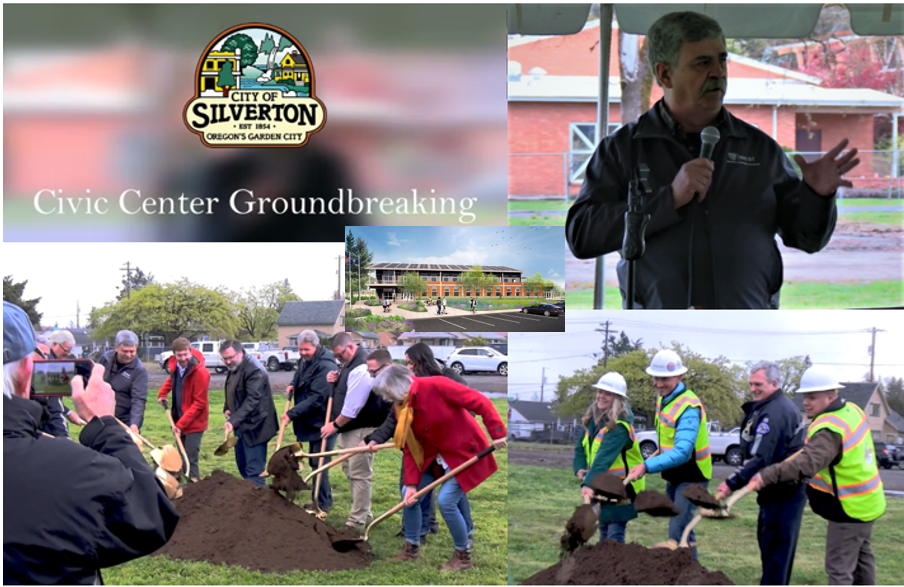
It was my pleasure to participate in the Silverton Civic Center Groundbreaking ceremony on April 11th. This is a wonderful opportunity for the City of Silverton. The vision of the Civic Center has been in the works for well over a decade. As the former Silverton Police Chief, City Manager, Mayor, and now as your State Legislator, I have had the honor and privilege to be a part of this dream becoming a reality. In the 2021 session, I was able to secure ARPA funds to help support this project and I’m excited to see it finally get off the ground.
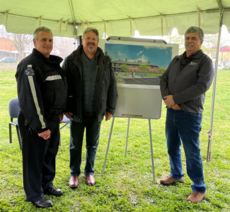
The Civic Building will be the heart of the Silverton community’s essential services and brings the center of operations and emergency services into alignment with the community’s resiliency goals. It will house the police department, emergency operations center, city council chambers and city hall – and will be built to meet current seismic and other regulations regarding police buildings. This is an important update to the City’s infrastructure that will serve the community for generations to come.
A video recording of the groundbreaking ceremony can be viewed here.
|

On April 21st, I joined community partners to celebrate the ceremonial groundbreaking for the Center for Hope & Safety (CHS) at HOPE Plaza in Salem. The Center for Hope and Safety (formerly Mid-Valley Women’s Crisis Service) offers a safe refuge and support to victims and survivors of domestic violence, sexual assault, stalking and human trafficking.
HOPE Plaza is a unique project that will generate housing, create opportunity, build partnerships, and provide employment at the site of the old Greyhound Bus Terminal in downtown Salem. On the first floor, businesses will provide job training and/or beneficial services for survivors of domestic and sexual violence. An additional two floors will provide 20 units of affordable permanent housing for survivors. Case management and intensive wrap-around services will be provided by advocates at CHS. I will support State funding assistance to finish paying for the project in the next Legislative Session.
CHS has been providing quality services to survivors of domestic violence, sexual assault, stalking, and human trafficking in Marion County for 48 years. The HOPE Plaza project will be a vibrant addition to the Salem downtown core, breathing life into a neglected urban block and bringing needed housing and economic opportunities to the community. This project truly builds HOPE for the future and is another vision in our community to become reality.

April 4th, I provided a legislative update to the Rotary Club of Silverton. Thank you to all who attended and for the invitation for me to share what’s happening in Salem. I am truly grateful for your dedication and commitment to service above self that is evident in all you do for our community. Thank you!
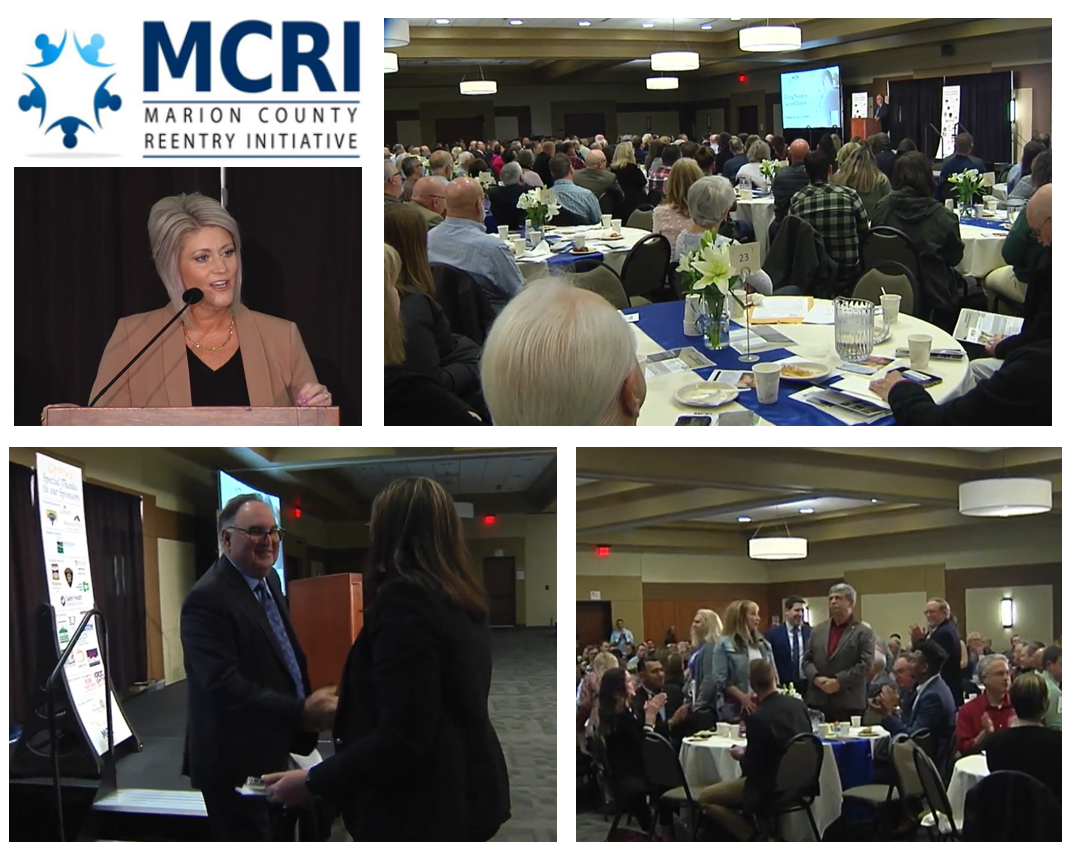
On April 28th, I attended the annual Giving People a Second Chance Community Breakfast, hosted by the Marion County Reentry Initiative. The turnout was incredible with over 400 in attendance to support MCRI’s work in our community. As a long-time member of the Marion County Public Safety Coordinating Council, it is always a pleasure to attend this event and support reentry initiatives that first hold people accountable for their actions and then provide them with opportunities to be successful. The Marion County Reentry Initiative (MCRI) is a collaborative effort involving community corrections, education, law enforcement, health and non-profit agencies working together to rebuild lives, promote community safety and save taxpayer money by breaking the cycle of criminal activity.
MCRI works to reduce crime and recidivism by offering coordinated services which are critical for successful community reentry after release from prison. MCRI’s key partners provide housing, transportation, treatment, mentoring, family strengthening, and employment services for MCRI clients.
This program changes lives and improves public safety. It is a worthy program I can wholeheartedly get behind.
You can view a video of this event, listen to personal stories of success, and learn more about MCRI here.

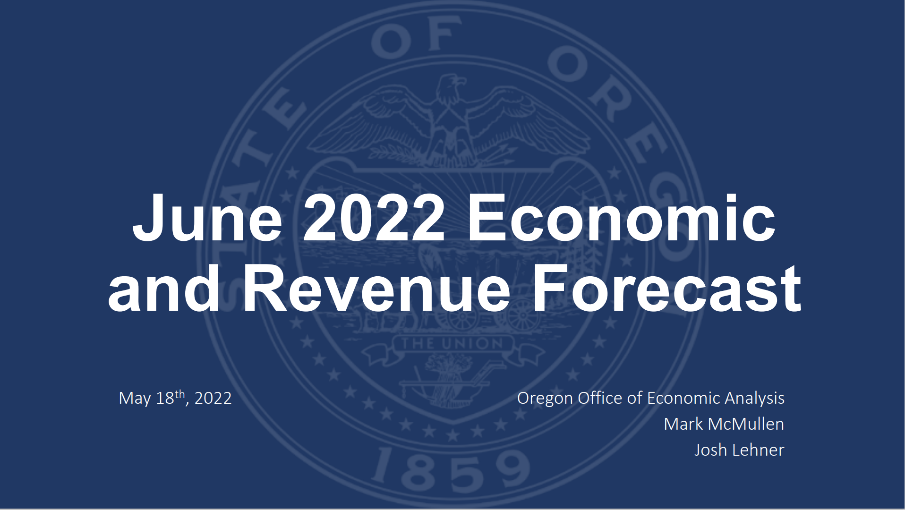
Today, the Office of Economic Analysis (OEA) released the June 2022 Economic and Revenue Forecast.
Forecasters reported that Oregon’s economy continues to see unprecedented revenues. The revenue growth has resulted in record balances in the current biennium, to be followed by a record kicker in 2023-25.
Forecasters also cautioned that the recessionary risk is rising and that a steep revenue decline of the sort Oregon experienced during the tech and housing busts are increasingly likely. Times of plenty lend opportunity to plan ahead for an ultimate downturn. I will support every effort to curb the costs of out-of-control spending in state government, maintain strong reserves to tackle future challenges, and protect the kicker to give Oregonians relief from the non-stop burden of inflation.
You can find the Executive Summary of the forecast here and the full report here.
The Oregon Economic Forecast provides information to planners and policy makers in state agencies and private organizations for use in their decision making processes. The Oregon Revenue Forecast opens the revenue forecasting process to public review. It is the basis for much of the budgeting in state government. Forecast reports are issued four times a year: March, June, September, and December.
You can watch a video recording of today’s presentation on OLIS here. Forecast documents are posted on OEA’s webpage here. You can also subscribe here to receive an email when future forecast posts to the site.

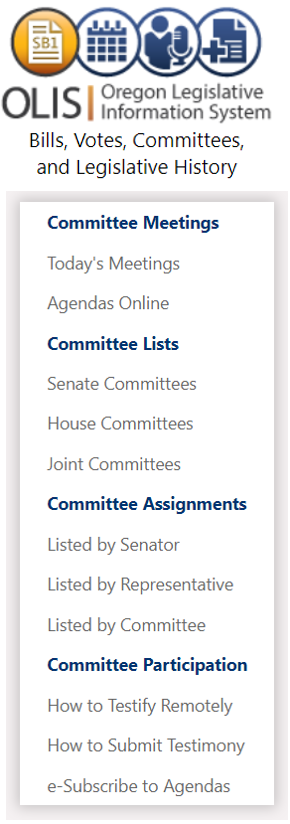
Legislators will meet for task force and interim committee meetings May 31st - June 3rd. Interim meetings offer opportunities for engagement between sessions.
Since Oregon voters adopted annual sessions in 2010, the Legislature meets for a maximum of 160 days in odd numbered years and 35 days in even numbered years. The period of time in between sessions is called the “interim”. The Legislature convenes periodically during the interim for Legislative Days approximately every eight weeks and last for four days.
During Legislative Days, committees may hold informational hearings on topics that could lead to legislation in upcoming sessions, hear updates on implementations of past legislation, hear reports from state agencies and task forces, and keep current on the subject areas which affect Oregonians.
The Senate may also convene for the purpose of making executive appointments during this time. You can find the Governor’s list of state board and commission appointments to the Oregon Senate for confirmation in June here.
Committee meetings can be viewed live through the Oregon Legislative Information System (OLIS).
|
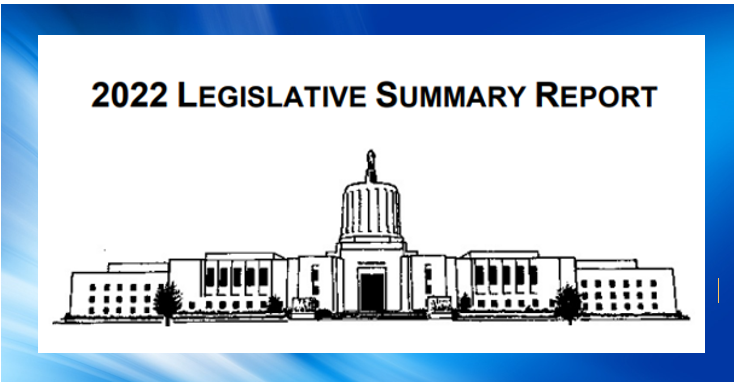
In my March End of Session Report, I covered the 2022 short session hot-button bills, legislation before my committees, and spotlighted public safety issues. Since that time, the Legislative Policy and Research Office (LPRO) has completed its post-session work to publish the 2022 Legislative Summary Reports. These reports provide additional details about the legislative issues of the 2022 session and are organized by policy areas and highlight policy measures that received a public hearing in a policy committee in the short session. I hope you find the summaries informative.

In the “Missed Opportunities” and “Spotlight on Public Safety” sections of my March End of Session Report, I also covered issues and concerns relating to the spiraling out-of-control fentanyl problem flooding our state and its devastating death toll. In April, the Oregon-Idaho High Intensity Drug Trafficking Area (HIDTA) issued the following Community Threat Bulletin
According to the latest information, drug overdose deaths in Oregon have risen 33.6% in the past year. I call upon my colleagues to take a comprehensive look at the impacts of Ballot Measure 110 which decriminalized heroin, cocaine, oxycodone and methamphetamine and take steps in order to get more people into drug treatment. This needs to happen in the next Legislative Session. We cannot afford to wait any longer.
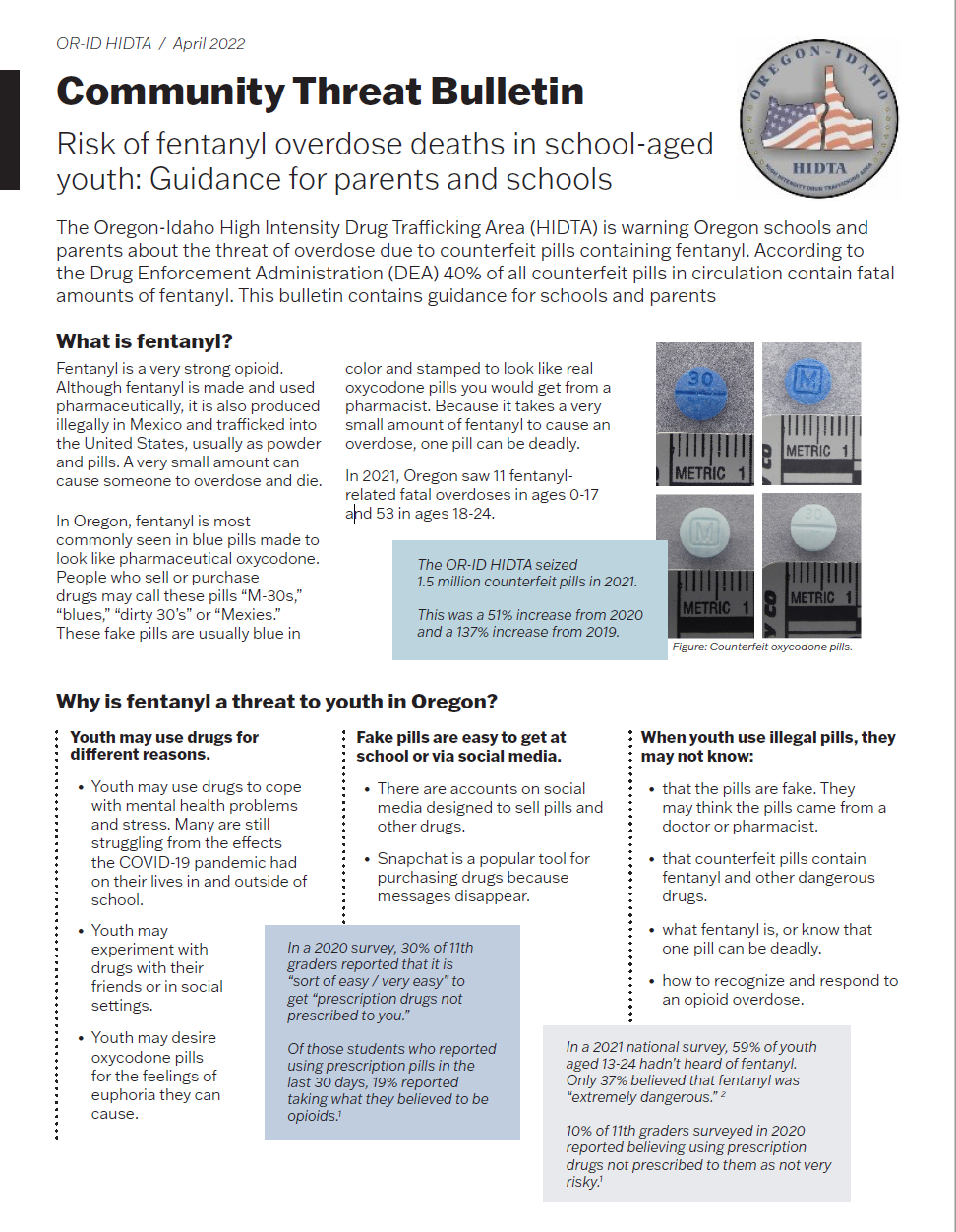 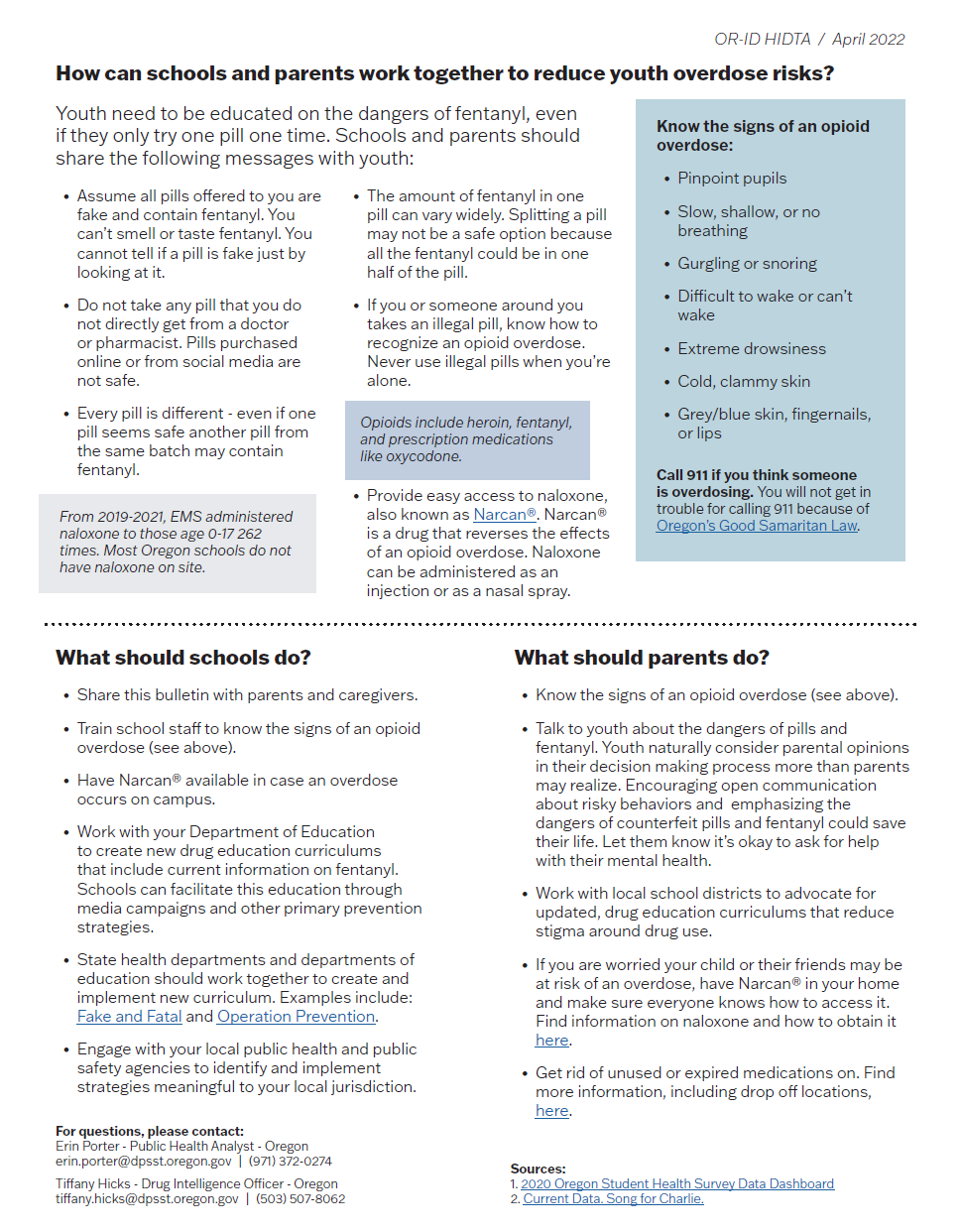

On May 9th, the Oregon Department of Agriculture (ODA) today launched the Oregon Disaster Assistance Program (ODAP) for farmers and ranchers who suffered financial losses during one or more of the natural disasters that hit Oregon in 2021. The $40 million program includes forgivable loans for eligible farmers. ODAP is designed to complement USDA Farm Service Agency (FSA) disaster assistance, contact your local FSA office more additional information.
For more information about ODAP please visit ODA’s ODAP webpage.
ODAP applications are available through a participating lending institution near you. ODAP will be administered by four chosen lenders familiar with agriculture. Lenders who are accepting applications:
Applications will be available until June 3, 2022, when assistance will begin to be processed. Based on available funds, ODAP may conduct a second round of applications.
To view a sample application please visit the ODAP webpage.

Last week the Oregon Department of Forestry (ODF) and the Oregon State Fire Marshall (OSFM) offices provided legislators with a briefing of the 2022 Fire Season. ODF and OSFM continue year-round, statewide efforts to promote fire prevention, home protection, and fire adaptation.

A large portion of Oregon remains under significant drought conditions, giving all indications that the 2022 fire season will challenge Oregon’s fire response systems. Agency leaders urged legislators to continue to make critical investments to support fire mitigation and suppression efforts statewide.

Over the last few years, Oregon has seen an increase in wildfire activity across the state. These wildfires have increasingly burned through communities, upending lives and changing the landscape for decades to come. The Office of State Fire Marshal (OSFM) and its partners are taking part in Wildfire Awareness Month to prepare Oregonians, visitors, and communities for the threat of wildfire. Each week in May has been given a designated focus, not only on how to prevent wildfires but prepare for them as well. Below is a calendar of the weekly topics.
May 2nd – 8th: OSFM - Defensible Space
May 9th – 15th: ODF - Escaped Debris Burning (#1 wildfire issue statewide)
May 16th – May 22nd: ODOT - Vehicle Fires (Leading source of wildfires each summer during fire season)
May 23rd – May 29th: PNWCG and KOG - Recreational Campfires Ahead of
Memorial Day: (#3 wildfire issue during fire season)
May 30th: OEM - Evacuation Levels and Evacuation preparations and Checklists Prior to Fire Season
Check out OSFM’s May Newsletter, The Gated Wye, for information and resources about fire safety and prevention.
To attend one of OSFM’s upcoming Wildfire Webinars you can register through Eventbrite at the links below:
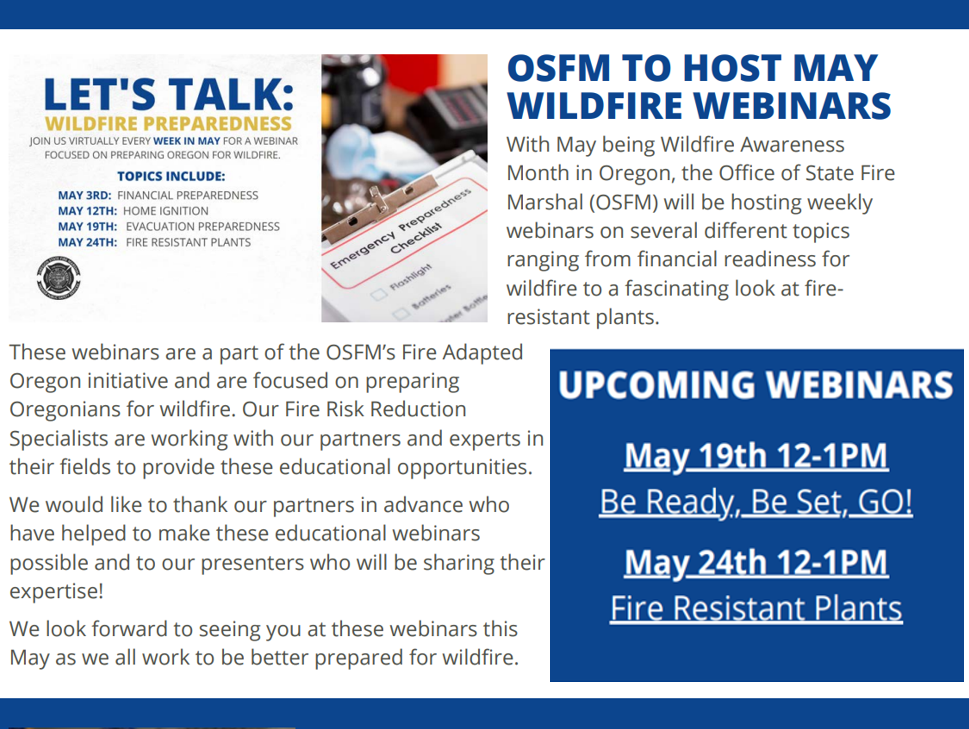
The Oregon Wildfire Response & Recovery webpage also provides valuable information to help you stay safe, stay informed and stay connected so you can access resources before, during and after wildfires.
In the graphics below, I am sharing the message on the importance of creating defensible space to your home and property from wildfire. Thank you for doing your part to keep our communities safe!


My interim legislative work includes task force meetings and other legislative related committee meetings. I am currently the Vice-chair of the Asset Forfeiture Oversight Advisory Committee (AFOAC). This committee operates under the purview of Oregon Criminal Justice Commission.
What is the AFOAC and what does it do? I’m glad you asked…
In 1989, the Oregon Legislature enacted a comprehensive civil forfeiture statute to capture revenue from controlled substance transactions which otherwise escape taxation, and to allow the use of that revenue to improve government response to drug-related prohibited conduct. That law provided for forfeiture in a civil action of properties used in or related to drug crimes. 1989 Oregon Laws Chapter 791, amended and codified as ORS Chapter 475A in 1997, further describes how seized assets will be handled. It establishes conditions for disbursal of funds received through forfeiture and provides for the return of assets to claimants if those assets are not found to have been used for or derived from unlawful drug activity.
The Asset Forfeiture Oversight Advisory Committee (AFOAC) was created to aid the Legislature in determining the effect of the law and the manner in which it was being applied. I served on the committee for many of its early years as the law enforcement representative and was reappointed to the committee after becoming a State legislator. The AFOAC prepares “reports detailing the number and nature of forfeitures carried out” under this law. In 1997, the Legislature repealed the sunset provision of the forfeiture law, provided staff for the AFOAC, and directed the AFOAC to review the reporting process. Funding for AFOAC staff was provided from state and local forfeiture proceeds. The committee consists of two legislators appointed by the President of the Senate, two legislators appointed by the Speaker of the House of Representatives, three members appointed by the Governor, and three members appointed by the Attorney General.
Our April 13th meeting included a review and a vote to approve the Asset Forfeiture (2021) Report. This report is due annually on or before April 30th to the Speaker of the House, Senate President, Attorney General and Governor.

I also serve on the Road User Fee Task Force (RUFTF). The task force exists under the Oregon Department of Transportation (ODOT) and was created by the Oregon Legislature in 2001 when members recognized that hybrid and electric vehicles were becoming widespread. Since these vehicles consume little or no fuel, their owners pay little to no fuels tax for their use of the road. The task force is charged with finding a viable alternative to the state gas tax that could generate sustainable funding for Oregon's transportation system.
RUFTF has 12 voting members. Members are appointed by the Governor, Senate President and House Speaker, plus two members appointed by the Chair of the Oregon Transportation Commission (OTC). Generally, members serve four-year terms.
Prior to my appointment to the Task Force and after exploring a number of options such as a tire tax, a battery tax, and expanding other user fees such as the gas tax and registration fees, the group landed on a per-mile charge as the most fair and accurate way to pay for state roads and bridges. The group directed two ODOT pilot projects in 2006 and 2012 that tested a pay-by-the-mile charging system.
The task force is now focused on developing OReGO, the first fully-operational, revenue-generating, per-mile charging system in the U.S., launched July 1, 2015.
Wishing you a safe and blessed Memorial Day as we remember and honor our military service men and women who made the ultimate sacrifice to protect our freedoms.
 Capitol Phone: 503-986-1418
Capitol Address: 900 Court St. NE, H-484, Salem, Oregon 97301
Email: Rep.RickLewis@oregonlegislature.gov
Website: http://www.oregonlegislature.gov/lewis
|